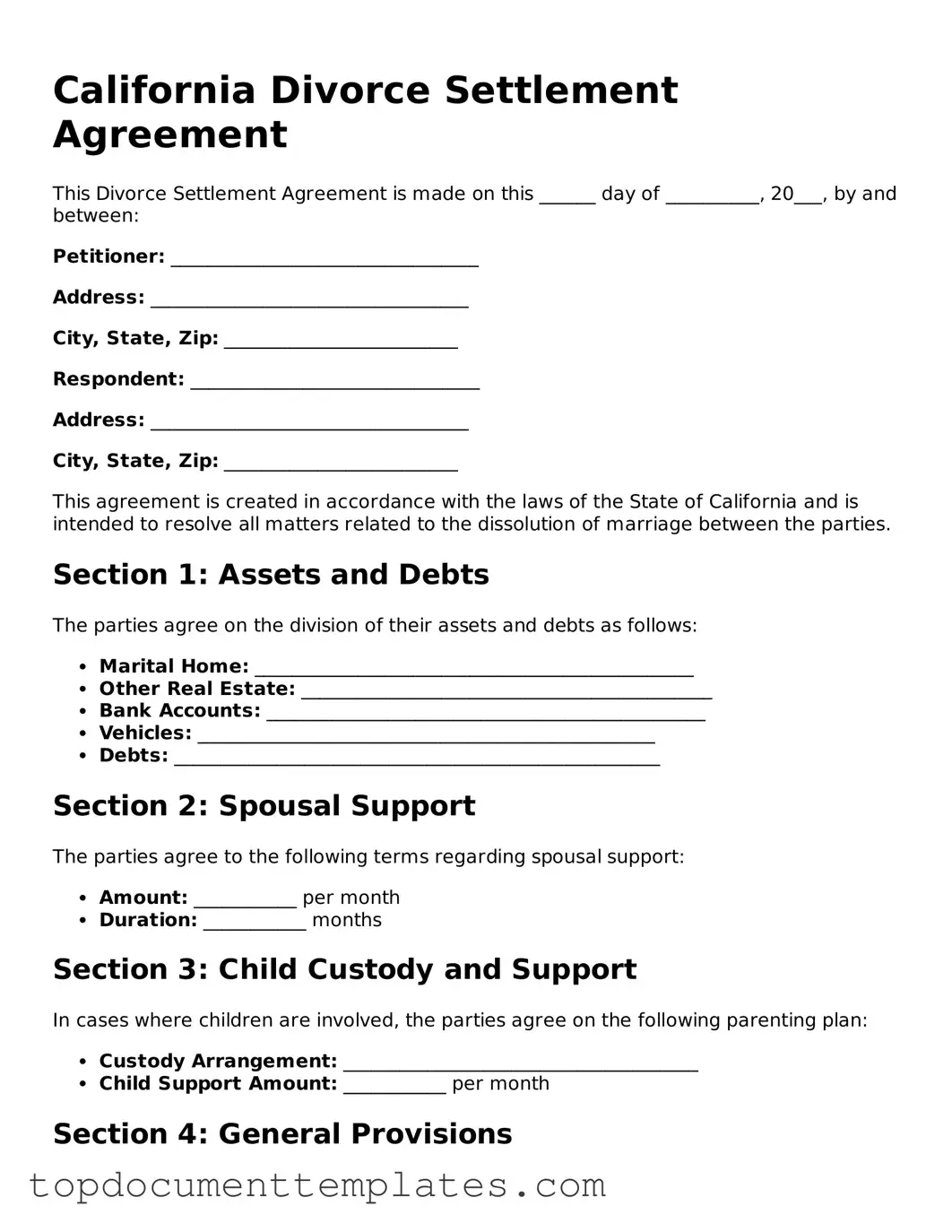Valid Divorce Settlement Agreement Form for California State
The California Divorce Settlement Agreement form is a legal document that outlines the terms of a divorce between two parties. This agreement addresses important issues such as property division, child custody, and support payments. Completing this form is essential for ensuring that both parties are on the same page and that the divorce process proceeds smoothly.
To get started, please fill out the form by clicking the button below.
Open This Form
